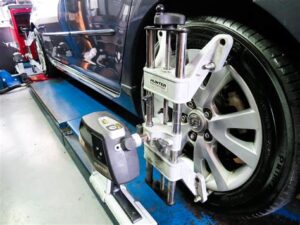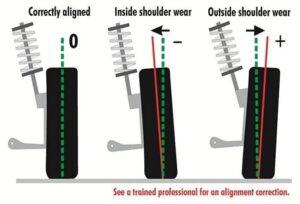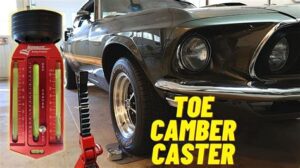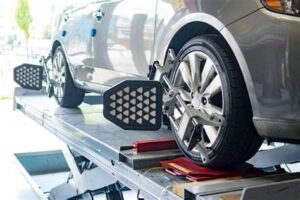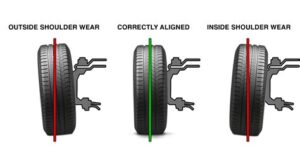Maintaining your vehicle’s health is essential for ensuring a safe and smooth driving experience, with wheel alignment playing a crucial role. But how often do cars truly need alignment? Various driving conditions, maintenance habits, and tire wear can significantly influence this necessity. In this article, we’ll explore the factors determining how frequently your car requires alignment, including the impact of your driving environment and vehicle upkeep. You’ll also discover key signs that indicate when it’s time for an adjustment, expert recommendations on alignment frequency, and insights into how proper maintenance can extend the life of your tires. Join us as we navigate through the essential details to help you keep your vehicle in optimal condition.
Understanding How Often Cars Need Alignment Based On Driving Conditions
When considering how often your car needs alignment, it’s essential to factor in the driving conditions you encounter on a regular basis. Certain environments and driving habits can increase the frequency with which your vehicle may require alignment adjustments. Below are key factors that can influence alignment needs:
| Driving Condition | Frequency of Alignment Needed |
|---|---|
| Urban Driving (frequent stop-and-go traffic) | Every 6 months to 1 year |
| Highway Driving (smooth, long-distance travel) | Every 1 to 2 years |
| Off-Road Driving | Every 3 to 6 months |
| Seasonal Changes (heavy winter driving or rainy seasons) | Every 6 months |
| Rough Road Conditions (potholes, gravel roads) | As needed, after any significant impact |
Additionally, if you frequently drive on poorly maintained roads, it’s wise to check your alignment more often. Regular inspections can help maintain optimal vehicle performance, ensuring that you catch any alignment issues early on. Thus, the frequency of alignment checks should be adapted depending on your driving habits and conditions, making it a personalized assessment for each driver.
Key Signs Indicating Your Car Needs Alignment More Often
Maintaining proper alignment is crucial for the overall health and performance of your vehicle. Here are some key signs that indicate your car may need alignment more often than usual:
- Uneven Tire Wear: If you notice that your tires are wearing unevenly, it may be a clear sign that your car needs alignment. Tires with bald spots on one side or excessive wear on one edge indicate misalignment.
- Steering Wheel Off Center: When driving straight, if your steering wheel is off-center or tilted, it suggests that your wheels are not aligned correctly. This misalignment can lead to further issues down the line.
- Vehicle Pulling to One Side: If you find your car pulling to the left or right while driving on a straight road, it is a symptom of misalignment that should not be ignored.
- Increased Vibration: Unusual vibrations felt through the steering wheel while driving can indicate alignment issues or other problems with the suspension system. If this occurs frequently, you should address it promptly.
- Steering Wheel Vibration: If your steering wheel shakes or vibrates, it could be a sign that an alignment is needed. While vibration can also mean other issues, misalignment is a common culprit.
Recognizing these signs can help you determine how often you need to check your car’s alignment. It’s advisable to get a professional evaluation whenever you suspect an issue to avoid further damage and ensure a smooth driving experience.
How Often Vehicle Maintenance Affects Alignment Needs Over Time
The frequency of vehicle maintenance plays a significant role in determining how often your car needs alignment adjustments. Routine maintenance not only ensures optimal performance but also helps identify any underlying issues that could affect your car’s alignment. Neglecting general maintenance can lead to misalignment over time, resulting in uneven tire wear and handling problems.
One of the primary aspects of maintenance is tire rotation, which should be performed regularly to promote even tire wear. If tires are unevenly worn, this can cause strain on the suspension system, leading to misalignment. Regularly checking and adjusting tire pressure is equally important, as incorrect pressure can cause premature wear and ultimately affect alignment.
Additionally, regular inspections of suspension components, such as ball joints and tie rods, can help identify any worn parts that may influence alignment. Addressing these issues promptly during maintenance can prevent the alignment from changing unexpectedly and ultimately save you money on repairs.
Many automotive experts recommend having your alignment checked during routine maintenance intervals, especially during oil changes or tire rotations. This proactive approach can help ensure that your vehicle remains properly aligned and reduce the frequency with which you need to seek out alignment services.
Consistent vehicle maintenance significantly influences how often you should align your car. By staying on top of regular inspections and addressing any maintenance needs, you can maintain your vehicle’s alignment effectively over time.
The Impact of Tire Wear on How Often You Should Align Your Car
Tire wear plays a significant role in understanding how often your car needs alignment. Tires are the only contact point between your vehicle and the road, and their condition can directly affect your car’s alignment and overall performance. Misalignment can lead to uneven tire wear, compromising safety and efficiency.
When tires wear unevenly, it often signals that the vehicle is out of alignment. For example, if you notice that the inner or outer edges of your tires are more worn than the center, it may indicate that an alignment check is necessary. Below is a table summarizing common types of tire wear related to alignment issues:
| Tire Wear Pattern | Possible Alignment Issue |
|---|---|
| Inner Edge Wear | Negative Camber (Tilted Wheels) |
| Outer Edge Wear | Positive Camber (Outward Tilt) |
| Center Wear | Over-inflation |
| Toe Wear (Wear on Both Edges) | Improper Toe Alignment |
In general, it is recommended to regularly inspect your tires for wear and get an alignment check performed not just at routine maintenance intervals, but also whenever you notice signs of unusual wear. As a rule of thumb, checking your alignment every 6,000 to 10,000 miles is a good practice, especially if you drive frequently on rough roads or have hit a pothole recently. By being proactive, you can extend the lifespan of your tires and ensure that your vehicle remains safe and efficient on the road.
Expert Recommendations: How Often Should You Align Your Car?
When it comes to understanding how often you should align your car, expert opinions can vary based on factors like vehicle type, driving habits, and environmental conditions. However, a general guideline is to have your alignment checked at least once a year or every 12,000 miles, whichever comes first.
Many automotive specialists recommend that you perform an alignment check:
- After any significant incident, such as hitting a deep pothole or curb.
- Whenever you replace tires or rotate them.
- If you experience uneven tire wear, which can indicate alignment problems.
- When your steering wheel is off-center or you notice your car pulling to one side.
In addition to these recommendations, it’s wise to consult your vehicle’s owner manual for any specific guidance from the manufacturer on how often alignment should be performed. Following these expert guidelines can help ensure your vehicle maintains optimal performance and tire longevity.
Frequently Asked Questions
What is car alignment?
Car alignment refers to the adjustment of a vehicle’s suspension system, ensuring that the wheels are set to the optimal angle in relation to each other and the road.
How can I tell if my car needs an alignment?
Signs that your car needs an alignment include uneven tire wear, your steering wheel being off-center, or your car pulling to one side while driving.
How often should I check my car’s alignment?
It’s recommended to check your car’s alignment at least once a year, or more frequently if you experience driving issues or after hitting a large pothole.
Does alignment affect fuel efficiency?
Yes, improper alignment can lead to increased tire wear and drag, which can negatively impact your vehicle’s fuel efficiency.
What are the benefits of proper alignment?
Proper alignment can improve vehicle handling, enhance tire life, and contribute to better gas mileage, making it essential for overall vehicle performance.
Can I perform a wheel alignment myself?
While some aspects of wheel alignment can be checked at home, a precise alignment typically requires specialized equipment and is best performed by a professional mechanic.
What will an alignment service typically cost?
The cost of a wheel alignment can vary; on average, it ranges from $50 to $100, depending on your vehicle type and location.
